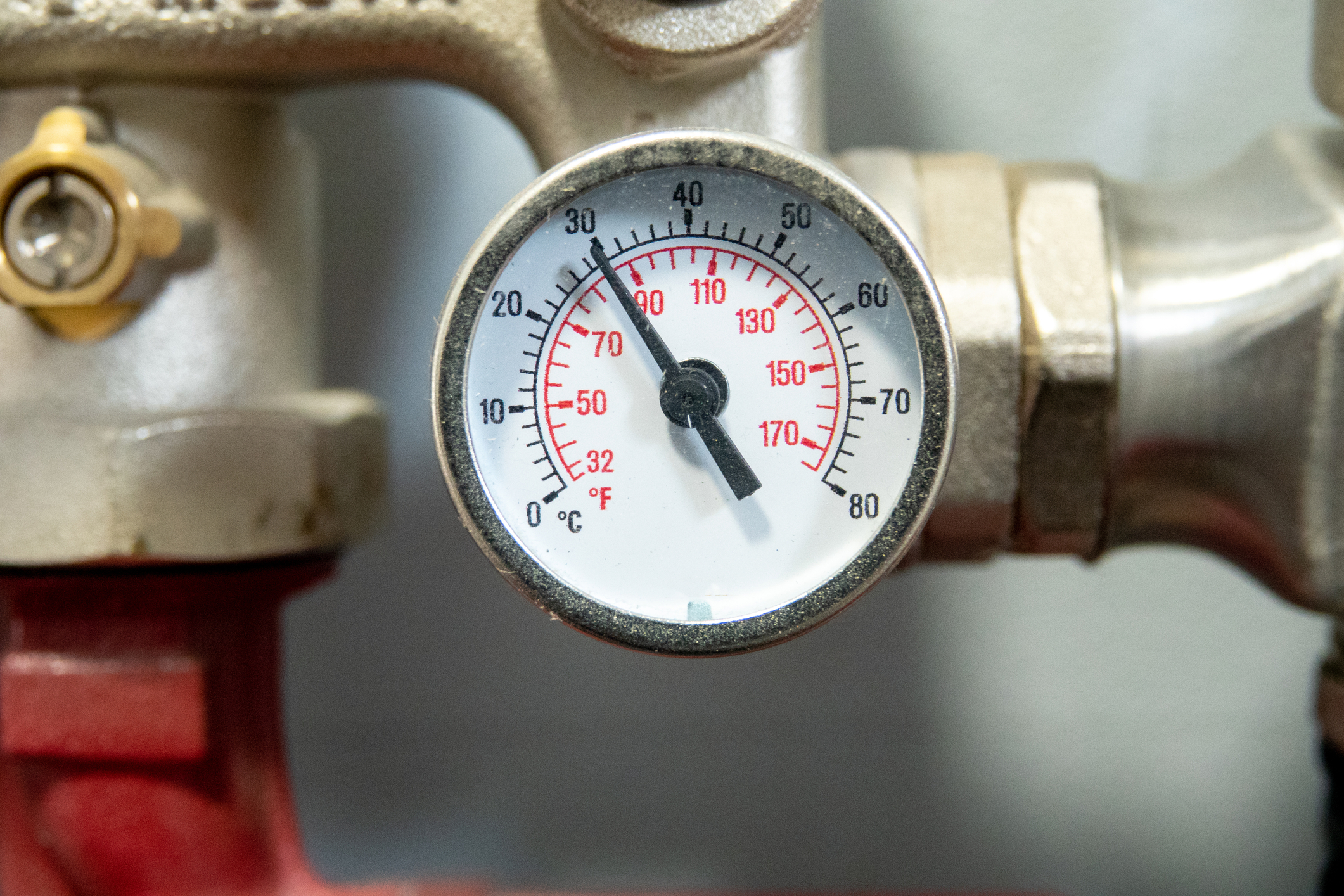It might take a while getting used to not having hot water available in your piping system, but it entirely becomes a pain when winter comes, and you’re left with only cold water to deal with. This may lead to chattering teeth after a good shower and general discomfort among the members of the household. So, you check for a problem and realise that your boiler pressure has been going down. I imagine the first thing you did before anything else is google “repressurise boiler,” and that’s what has brought you here today. So here’s our little gift for you, a short how-to on how to get that pressure working back to its best form.
Checking the boiler if the water pressure is low
To assess if pressure really is the problem, start by checking the gauge for water pressure in the boiler’s facade. To make sure that you are looking at the right gauge (because different makes and models tend to display this differently), check the user instructions provided when you bought the boiler.
A digital gauge will either show only 1 bar (reading here is quantised as bars) or an alarming sign such as a flashing reading or a pressure warning. Hydraulic gauges, on the other hand, show only red sections or zones both on the left and right side of the display dial. An indicator needle lying on the far right red zone indicates that the water pressure is high, while if the needle is on the far left red zone, it means that the water pressure is low.
How to find out your boiler’s correct water pressure
The best possible pressure to reflect on your gauge would be something between 1 and 2 bars. For reference, a cold radiator will show only 1 bar. If the pressure reads 2.75 bars or higher, it is indicative of dangerously high pressure, and anything lower than 1 bar is considered low pressure. It’s quite dangerous to have your boiler keep such a high pressure as this may be signs that the boiler’s pressure release system is broken or there’s too much water in the heating system. For such cases, always consult professionals so as not to endanger your entire household.
A few instances that may be the cause of your low water pressure
There are only two common mishaps that occur in your boiler for it to have low pressure:
You just conducted radiator bleeding – For case 1, it usually occurs after water from the central heating system is let go. By bleeding radiators, you release water from your central heating system. Sometimes, this could cause low boiler pressure. Fortunately, this could be easily remedied by when you repressurise the system.
Your heating system has a leak – For case 2, there might be a hard-to-find leak somewhere in your central heating system that’s the cause of boilers losing pressure. If you check the pipes, the boiler, or the radiator, you may notice damp spots around. These are usually small hence the slow drop in pressure on your boiler, as you may have noticed.
Also, please do not attempt to check for a leak inside the boiler – it’s too dangerous. Please leave the job to a Gas Safe registered plumber or heating engineer instead. If you may have found any leaks, do not hesitate to contact an engineer to have it fixed to save you time and money.
A Step-by-step guide on repressurising a boiler
There are two ways to increase the pressure on your boiler, depending on its the make and model. So make sure to check your boiler’s user manual before proceeding. You may opt to search for yours online if you seem to have misplaced your copy. You may also opt for something visual; manufacturers usually put up videos of a DIY fix that can be found through a quick google search.
FIX 1: To repressurise your boiler with a filling loop
- Switch off the boiler and leave it to cool.
- When cool to the touch, check on the filling loop or filling hose to see if both ends of it are correctly connected to the boiler.
- Open the two valves on your boiler and wait to have cold water from your mains fill it.
- Leave the valves open for a while. When the pressure hits 1.5 bars, close both valves subsequently.
- Try powering on your boiler again. In some cases, electric boilers have reset buttons so you may also opt for that.
- Check the pressure gauges to see if you have successfully topped up the pressure. Watch the pressure rise.
- Once the pressure on your boiler has reached the optimum level, take out the filling loop or filling hose from the system and make sure the water caught in it doesn’t spill.
- Dry out the filling loop and store is a safe place until needed again.
FIX 2: To repressurise your boiler with a repressure key
- Switch off the boiler and leave it to cool.
- Underneath the boiler, look for a concealed tray that houses the key and its slot.
- Insert the key and make sure it lines up on the unlock position or the “open padlock” engraving on the slot.
- Give it a push and turn it to the locked position or the “closed padlock” engraving.
- Make water flow into the boiler by turning the white square nut in a clockwise direction.
- Let the water in until it reaches a pressure of 1.5 bars. After this turn, the nut in a clockwise direction again to stop the water from coming in.
- Push and turn the key back to the unlock position or “open padlock” engraving. Some water may fall off the boiler; it’s normal.
- Power on the boiler again. Again, check the pressure gauges to see if you have topped up the pressure. If the pressure reads an ideal level, then your boiler is up to the task of once again heating your home!
How many times should I repressurise my boiler?
You may conduct this every time you find the pressure is low. However, repressurising the boiler should only be done once a week at the maximum. If you seem to be conducting this too often or too regularly, might as well outsource for help as water damage, as well as further damage to your boiler, are both bigger problems to resolve.
To avoid this from happening, do consider having annual boiler checks just to see if your boiler is in tiptop shape! If you doubt you could do all this by yourself, it would always be best to have a Gas Safe engineer do this for you instead. After all, boiler repairs cost less than having to purchase a new one and pay for boiler installation services when you cause irreparable damage to your boiler. So, don’t hesitate to call a professional today!





